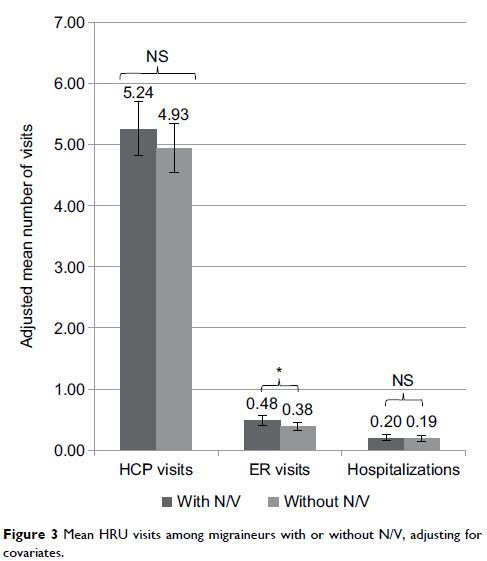100205
论文已发表
注册即可获取德孚的最新动态
IF 收录期刊
- 3.3 Breast Cancer (Dove Med Press)
- 3.4 Clin Epidemiol
- 2.5 Cancer Manag Res
- 2.9 Infect Drug Resist
- 3.5 Clin Interv Aging
- 4.7 Drug Des Dev Ther
- 2.7 Int J Chronic Obstr
- 6.6 Int J Nanomed
- 2.5 Int J Women's Health
- 2.5 Neuropsych Dis Treat
- 2.7 OncoTargets Ther
- 2.0 Patient Prefer Adher
- 2.3 Ther Clin Risk Manag
- 2.5 J Pain Res
- 2.8 Diabet Metab Synd Ob
- 2.8 Psychol Res Behav Ma
- 3.0 Nat Sci Sleep
- 1.8 Pharmgenomics Pers Med
- 2.7 Risk Manag Healthc Policy
- 4.2 J Inflamm Res
- 2.1 Int J Gen Med
- 4.2 J Hepatocell Carcinoma
- 3.7 J Asthma Allergy
- 1.9 Clin Cosmet Investig Dermatol
- 2.7 J Multidiscip Healthc

Humanistic and economic burden of nausea and vomiting among migraine sufferers
Authors Gajria K, Lee LK, Flores NM, Aycardi E, Gandhi SK
Received 14 October 2016
Accepted for publication 13 January 2017
Published 24 March 2017 Volume 2017:10 Pages 689—698
DOI https://doi.org/10.2147/JPR.S124683
Checked for plagiarism Yes
Review by Single-blind
Peer reviewers approved by Dr Lucy Goodman
Peer reviewer comments 2
Editor who approved publication: Dr Michael Schatman
Background: While studies have demonstrated the economic burden of migraines in
terms of quality of life, health care resource use (HRU), and costs, there
exists a notable paucity of data comparing such outcomes among migraineurs with
nausea and vomiting (N/V) and those without. The current study aimed to address
this gap.
Methods: This was a retrospective study using data from the 2013 US National
Health and Wellness Survey, a cross-sectional, internet-based survey.
Respondents self-reported their migraine with or without N/V along with
demographics and outcomes including depression (Patient Health Questionnaire
total score; PHQ-9), sleep problems (11-item total score of sleep problems),
HRU (number of physician visits, emergency room [ER] visits, and
hospitalizations) and Work Productivity and Activity Impairment-General Health
Scale (WPAI-GH), and associated mean annual costs. Generalized linear models,
adjusting for covariates, assessed the burden of N/V on all outcomes.
Results: Among all migraineurs (N=7,855), 73.4% were female, mean age was 41.82
years old, and 57.6% reported experiencing N/V. Adjusting for covariates, migraineurs
with N/V vs without N/V had higher mean PHQ-9 scores (7.91 vs 7.02, p <0.001) and
mean sleep problems (3.29 vs 2.64, p <0.001). Mean ER visits were
more frequent among migraineurs with N/V than those without N/V (0.48 vs 0.38, p =0.001). This difference
translated into a 26.3% increase in estimated mean ER costs (N/V=US$1,499 vs
without N/V=US$1,187, p =0.002). Mean percentage activity
impairment was higher in migraineurs with N/V than in those without N/V (37.73%
vs 35.12%, p =0.002) and migraineurs with N/V
had higher work productivity loss costs (N/V=US$10,344 vs without N/V=US$9,218, p =0.016).
Conclusion: Migraine patients with N/V reported worse depression, sleep problems,
and activity impairment, and higher ER visits than those without N/V. Migraine
with N/V was also associated with an increase in mean annual ER visit costs and
work productivity loss costs. Study findings suggest unmet needs with current
treatment options for migraine patients with N/V.
Keywords: migraine, nausea, vomiting, depression, work productivity, healthcare
resource use, costs
